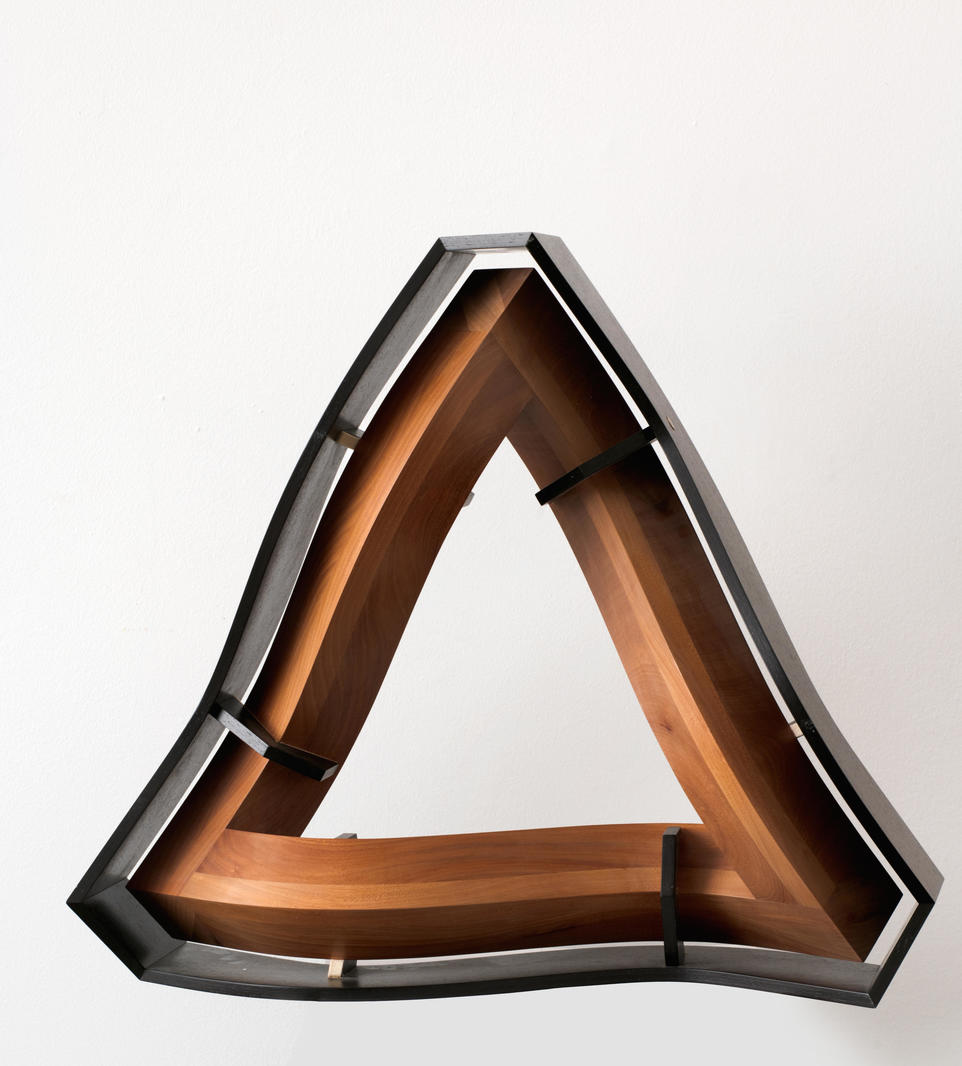
The sculpture by Vyacheslav Koleichuk is a fantasy on the topic of the "Penrose triangle", over which the artist worked actively in the early 70's.
The geometric drawings of American mathematicians Lionel and Roger Penrose inspired the artist to create a series of works called "Impossible objects." These are plastic experiments in which Koleichuk's kinetic models refute the laws of geometry when watching them from a certain angle. The double smooth contour of the presented wooden sculpture in triangular form embodies the "Mobius ыекшз" – the symbol of infinity, the spatial and philosophical paradox known as the figure "without the underside".
The visual-spatial experiments of Koleichuk, one of the brightest representatives of Soviet kinetic art (a member of the “Movement” group in the mid-1960’s), bring him closer to the Dutchman Maurits Escher, a graphic artist who studied the features of the perception of complex three-dimensional objects in detail. Inheriting the traditions of constructivists, especially the genius of Tatlin, Koleichuk works with the plane, stubbornly proving that any image on paper can be made spatially voluminous. Going beyond the scope of artistic creativity, the author involves the viewer in a kind of intellectual game that contains a plastic task and its solution. V